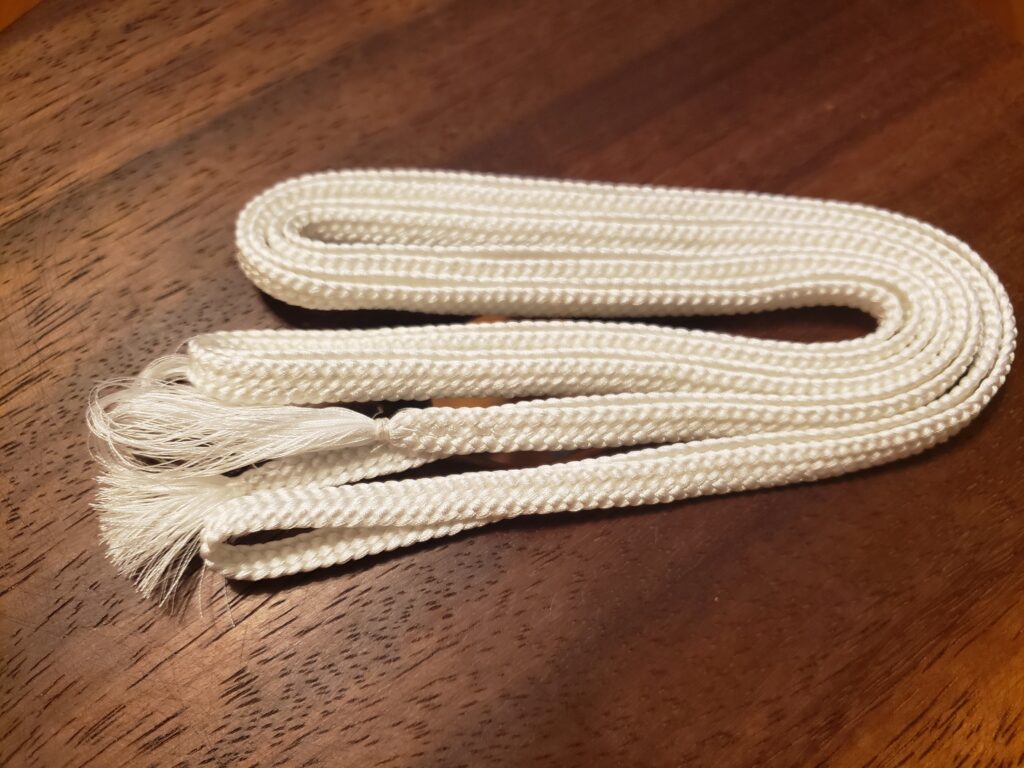I really thought the flat braid would take a little longer to complete. I knew I’d finish it today, but I thought it would have taken another couple hours. Sometimes it’s pleasant to be wrong.
It finished out at 78 inches, so will need cutting down. You may notice that it looks a little bit like a shoelace.

The components for the hat are now complete.
I need to fold over the top edge of the mushi no tareginu and stitch it. The kazari-himo (deocrative cords) need to be tidied up in length, though I could simply tie them up…
Next is whether or not to cut the slits to weave the flat braid through the “curtains.” I’m torn on this. As much as the idea of experimental archeology excites me, I’m just not convinced I have quite enough research to move forward. Research, ha! I have one highly zoomed in photo. I have no idea how it is secured on either end. I know something was woven through though, at least in this example. All of the other images have no indication of a flat braid, or anything for that matter, woven through. But they are all slightly later period (past 1200 or so).
After that difficult decision, the mushi no tareginu and kazari-himo will be attached to the hat. I’ll consult a Chinese decorative knot book and tie up the cords in the large loops shown in the Costume Museum image.
I’m going to sit on most of that though and let the question about the flat braid percolate. Maybe I’ll see if I can find any other images…
I’m currently satisfied with my progress.
Tomorrow is kososde day.
